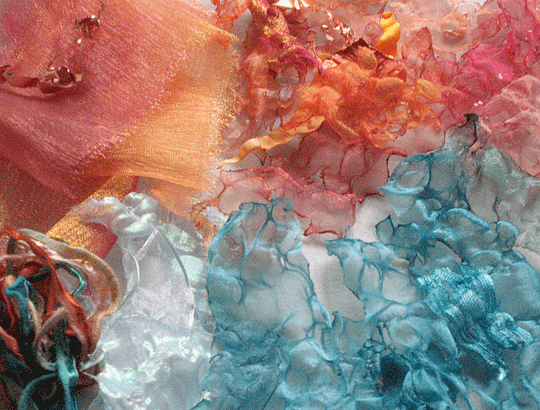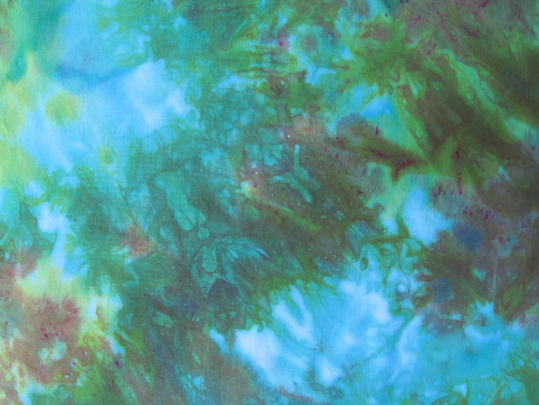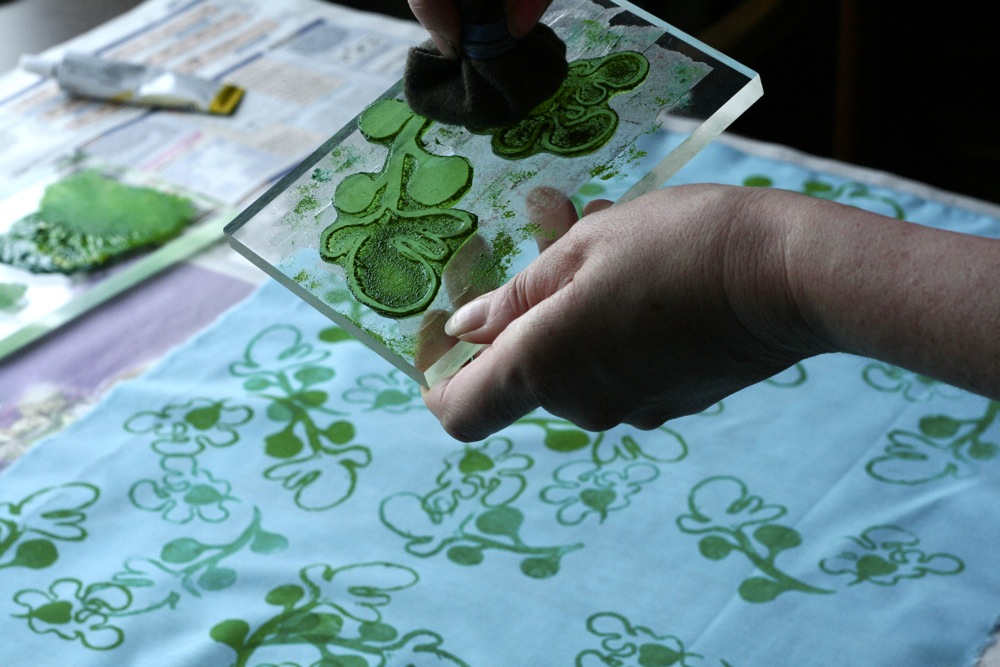Heat setting is a term used in the textile industry to describe a thermal process taking place mostly in either a steam atmosphere or a dry heat environment.




Dyeing.
Dyeing is the process of adding colour to textile products like fibres, yarns, and fabrics.





Archaeologists have found evidence of textile dyeing dating back to the Neolithic period. The earliest surviving evidence of textile dyeing was found at the large Neolithic settlement at Çatalhöyük in southern Anatolia, where traces of red dyes, possibly from ochre, an iron oxide pigment derived from clay), were found. In China, dyeing with plants, barks, and insects has been traced back more than 5,000 years. Early evidence of dyeing comes from Sindh province in Pakistan, where a piece of cotton dyed with a vegetable dye was recovered from the archaeological site at Mohenjo-daro (3rd millennium BCE). The dye used in this case was madder, which, along with other dyes such as indigo, was introduced to other regions through trade. Natural insect dyes such as Tyrian purple and kermes and plant-based dyes such as woad, indigo and madder were important elements of the economies of Asia and Europe until the discovery of man-made synthetic dyes in the mid-19th century. The first synthetic dye was William Perkin's mauveine in 1856, derived from coal tar. Alizarin, the red dye present in madder, was the first natural pigment to be duplicated synthetically in 1869, a development which led to the collapse of the market for naturally grown madder. The development of new, strongly coloured synthetic dyes followed quickly, and by the 1870s commercial dyeing with natural dyestuffs was disappearing.
http://www.dharmatrading.com/home/learn-how-to-ice-dye.html
Printing.
Textile printing is the process of applying colour to fabric in definite patterns or designs. In properly printed fabrics the colour is bonded with the fiber, so as to resist washing and friction. Textile printing is related to dyeing but, whereas in dyeing proper the whole fabric is uniformly covered with one colour, in printing one or more colours are applied to it in certain parts only, and in sharply defined patterns.



Printing on plain fabric developed in response to the popularity of "chintz" textiles imported to Europe from India, beginning in the early seventeenth century. These fine cotton fabrics were patterned with richly colored painted and dyed designs of exotic flora and fauna. Equally important, the colors resisted fading or running when washed in water. Imported cottons rapidly gained popularity throughout Europe and were seen to pose a threat to the powerful silk-weaving industry. For this reason, textile printing on a large scale was not successful in Europe until the eighteenth century, despite the fact that a method for colorfast printing was developed in Europe by 1670. Legislation was passed in France (1686) and England (1700) prohibiting the importation and domestic production of printed textiles. In England, however, printed textiles could be made for export only, so technology continued to develop there legally. The American colonies were a major market for these textiles. The Dutch, who had no such prohibitions, developed a textile printing industry during the late seventeenth century as well, but the French and English led the industry in the eighteenth century, despite legislation curbing production.
Printing on fabric has a long history, with archeological evidence from ancient India, Egypt and Greece. The line of development from the earliest printed textiles through to modern methods involves science, technology, politics, exploration and trade.
The earliest printed fabrics and textile printing technology arose in India. According to experts at the Musee de l'Impression sur Etoffes (The Museum of Printed Textiles) in Mulhouse, France, Indian printing, dyeing and colour fixing processes were passed through generations of craftspeople from as early as 2000BC.
In the 19th century, the Industrial Revolution and the birth of the Machine Age resulted in roller printing and the production of printed textiles on a large scale. Discoveries in chemistry led to the development of synthetic dyes. By 1902, about 700 colours were available for printing on fabric.